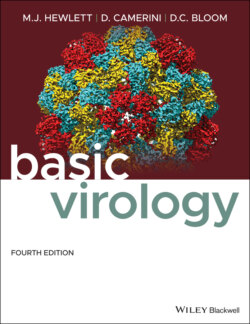Читать книгу Basic Virology - Martinez J. Hewlett - Страница 43
Some viruses with vertebrate reservoirs
ОглавлениеWhile many human viral diseases are maintained in the human population itself, some important pathogens are maintained primarily in other vertebrates. A disease that is transmissible from other vertebrates to humans is termed a zoonosis. Rabies is a classic example of a zoonosis that affects humans only sporadically. Because humans rarely transmit the virus to other animals or other humans, infection of a human is essentially a dead end for the virus. The rabies virus, which is transmitted in saliva via a bite, is maintained in populations of wild animals, most generally carnivores. The long incubation period and other characteristics of the pathogenesis of rabies mean that an infected animal can move great distances and carry out many normal behavioral patterns prior to the onset of disease symptoms. These symptoms may include hypersensitivity to sound and light, and finally, hyperexcitability and frenzy. Except in rare instances of inhalation of aerosols, humans only acquire the disease upon being bitten by a rabid animal; however, the fact that the disease can be carried in domestic dogs and cats means that when unvaccinated pets interact with wild animal sources, the pets become potential vectors for transmission of the disease to humans. Vaccination of pets provides a generally reliable barrier.
Many viral zoonoses require the mediation of an arthropod vector for spread to humans. The role of the arthropod in the spread can be mechanical and passive in that it inoculates virus from a previous host into the current one without virus replication having occurred (a favored route with animal poxviruses), but the arthropod's role as a vector can be dynamic. For viruses with RNA genomes that are transmitted between hosts via arthropods (such as those responsible for yellow fever, a number of kinds of encephalitis, dengue fever, and Zika virus), virus replication in the vector provides a secondary reservoir and a means of virus amplification. This makes spread to a human host highly efficient, since even a small inoculation of the virus into the arthropod vector can result in a large increase in virus for transmission to the next host.
